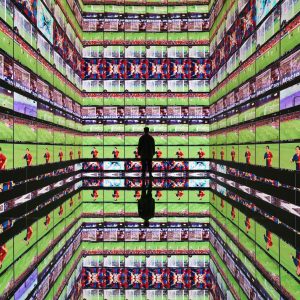
In reply to the below:
Many people with Aphantasia were unaware of it for most of their lives until the condition recently got a name and hit mainstream media. Most of us thought “picturing things” was simply a metaphor, particularly as it seems to counterintuitively be a separate process from things like colour memory and spatial awareness, which can be extremely good in so called Aphants. Dreaming and imagination are similarly not affected. A joy of seeing the world around in contrast to the dark when our eyes are closed leads many into art and design. Whilst they may have a poorer episodic memory for events, many Aphants have an extremely good memory for facts, data, and pattern recognition leading to careers in IT. It also can affect more than internal imagery, with some unable to hear music or their own internal monologue. Most commonly when imagining things, we are thinking of all the possibilities of that thing, including the space it would take up if the object were there. There is a growing list of famous people on the wikipedia page who have found out that they have Aphantasia, and we are still learning about it. However, sadly, unethical practitioners are already trying to get Aphants to do dangerous things like take increasing amounts of psychedelics to “visualise” when again this is a different process. In fact several Aphants learned of their condition by being given anaesthetics and being freaked out by being able to see things that weren’t there. Ultimately, this is a variation on the human condition, and there is another end to the spectrum aka Hyperphantasia where people with this condition can close their eyes and see an imax movie with added smell, taste and touch, which can be quite distracting from daily life.
What is Aphantasia? How does this affect a person’s life? How does Aphantasia manifest itself in children, and how can it be quickly detected?
How Does Aphantasia Affect A Person’s Life?
If you are told to imagine stills from your favorite movie, the face of a familiar person, or imagine your room or work environment, this will likely be easy for most people. I took it and presented it. Rarely, but some people are generally unable to imagine the faces of loved ones, images, and the taste of products. The most straightforward aphantasia test can be done by anyone to understand whether he can imagine. And what kind of deviation is this, and what is it called? You will now find out.
General Information About Aphantasia
Let us give a clear definition of this concept. Aphantasia is a conscious inability of a person to mentally represent any images, which means that he completely lacks fantasy. As a result, a person cannot retrieve pictures from memory and visualize them.
Such a deficiency greatly disorients a person in most life circumstances, and this neurological deviation from the norm is present in 2.5-3% of people worldwide. A lack of imagination in a person negatively affects most areas and interferes with whole life and work.
Impact On Life Lack Of Imagination
The presence of this deviation is an obstacle in the development of various professions, so the range of activities could be much higher. Aphantasia is not fully explored but is not a physical illness. The inability to visualize is an abnormal phenomenon in the human brain.
The following areas of the cerebral cortex are responsible for the possibility of visualization:
- frontal part;
- the area on the crown;
- temporal areas;
- area of the back of the head.
Due to the proper functioning of these areas, the ability to represent is ensured. If the work of the sections is disturbed, then there is a place to be aphantasia.
The ability of a person to imagine develops mental function, which means it contributes to the creation of new projects. And people with a lack of imagination can’t build something for the subsequent implementation of their idea: write a book, design a building, or be a designer.
Each person with varying degrees of aphantasia is unable to visualize. Someone is devoid of imagination and can imagine at least some part of a room, object, or object. Some cannot mentally display yesterday’s events, and someone can recreate a short period of recent events.
Children’s Aphantasia
The ability to visualize appears at the age of one. But if at the age of four, the aphantasia test does not give a positive result and your child cannot visualize and fantasize then engage your child with specialized techniques designed to develop imagination. In addition, books with bright and large pictures will help a lot. Engage him in drawing, walking more in nature and parks, and accompanying the walk by looking at beautiful architectural objects and their verbal description. The brighter the visual impressions of the baby, the more effective will be the fight against aphantasia. After asking how it will look, you can take it with a designer with extensive details and offer to create something from the parts.
The better a person can visualize from childhood, the more effectively they will develop his interests and hobbies in adulthood. The teenage period is also essential because the ability to visualize can help to avoid many obstacles in life; in addition, during the adolescent period, the active form of a person’s intellect takes place.
Having the opportunity to imagine, the child can analyze his actions, remembering and imagining the past situation. Visualization effectively helps in learning and promotes the teaching of foreign languages.
Summing Up
An aphantasia test is essential and should be done as early as possible on the child. We have described simple ways to determine this phenomenon. Still, various specially designed tests assess the presence of aphantasia and its severity. If a child’s fantasy is present, at least to some extent, then there is a high probability that it can be developed to an average level. The main thing is to detect the problem in time and take measures to establish it.







